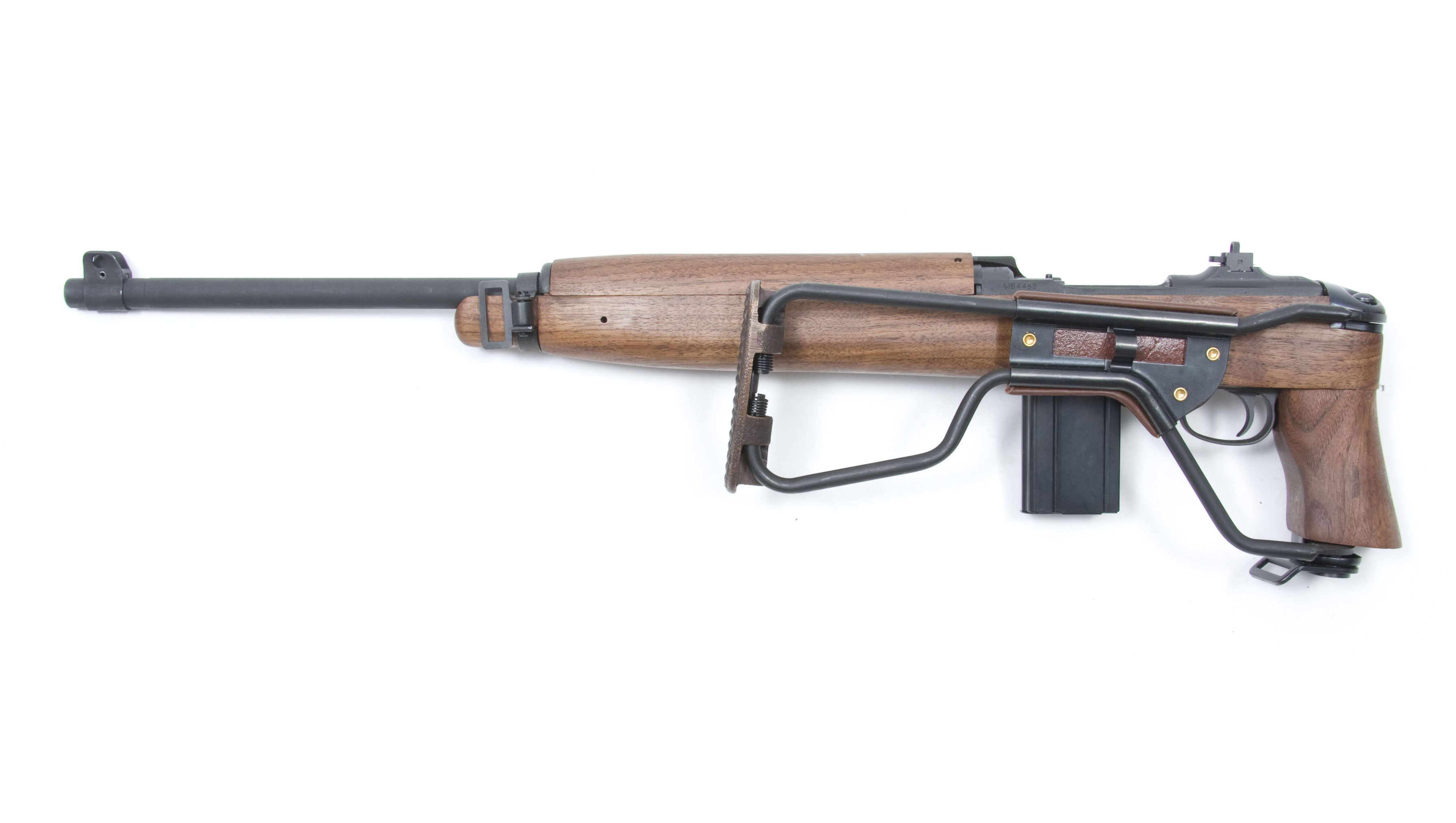I hope I don't step into a problem, in the hopes I credit this all correctly.
I was emailed a link to a website showing photos of towns in June 1944, with the same views photographed in 2014. One of the photos is of a soldier standing next to a town water fountain in Sainte-Marie-du-Mont on June 12, 1944. He has a rifle slung over his shoulder, and in my ignorance of military ordnance I do not know what it is. It caught my attention because it appears to have a folding stock of sorts. Or, are my eyes just not seeing what is there? So, can anyone identify this for me? Thanks...
Photographs by Galerie Bilderwelt/Getty and Peter Macdiarmid/Getty
Attachment 182099

|
   
   
|


|




 Reply With Quote
Reply With Quote














 There were two separate production runs of M1A1s. (Early “First Contract” U.S. M1A1 Carbine top.) The first were shipped between October 1942 and October 1943, and they had early carbine features, such as flip sights, high-wood stocks, flat-top bolts and narrow barrel bands. The second contract guns (“Second Contract” U.S. M1A1 Carbine btm.) date from May 1944 to December 1944 and had later carbine parts.
There were two separate production runs of M1A1s. (Early “First Contract” U.S. M1A1 Carbine top.) The first were shipped between October 1942 and October 1943, and they had early carbine features, such as flip sights, high-wood stocks, flat-top bolts and narrow barrel bands. The second contract guns (“Second Contract” U.S. M1A1 Carbine btm.) date from May 1944 to December 1944 and had later carbine parts. M1A1s were often issued with padded jump scabbards.
M1A1s were often issued with padded jump scabbards. RIA: Rock Island Arsenal
RIA: Rock Island Arsenal All M1A1 Carbines were made by the Inland Division of General Motors, regardless of when they were made during the war. Serial numbers were not distinguished between M1s and M1A1s. Approximate serial number blocks for M1A1s were 42,000 through 850,000 and 5,150,000 through 6,700,00.
All M1A1 Carbines were made by the Inland Division of General Motors, regardless of when they were made during the war. Serial numbers were not distinguished between M1s and M1A1s. Approximate serial number blocks for M1A1s were 42,000 through 850,000 and 5,150,000 through 6,700,00.






